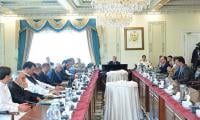In a latest attack against ethnic minorities, some armed men killed nine Shia Hazara miners in the northern Baghlan province of Afghanistan last Friday. The government blamed the militant Islamic State group for the brazen attack on the coalminers in the Tala Wa Barfak district of central Baghlan province.
The incident forced around 2000 Shias to stage a protest in western Afghanistan against the growing sectarian attacks by the group for better protection by the government. The militant Islamic State (IS), better known as Daesh, has been making steady inroads into the country, raising the spectre of sectarian discord in the region.
Afghanistan saw a wave of such attacks on the Shia community last year, almost all claimed by the IS. In October 2016, some 14 Shias were killed in a powerful blast at a mosque in the northern city of Mazar-e-Sharif hours after gunmen targeted Shia worshipers in a shrine in Kabul, killing 18 people.
Barely a few days into the new year, in a similar move, five members of the Shia Hazara community were injured when gunmen riding two motorbikes sprayed a vehicle near the Killi Mubarak area on Spiny road in Quetta, Pakistan. Lashkar-e-Jhangvie Al Alami was quick to claim the responsibility for the attack.
This is not the first such incident. The province has seen a wave of sectarian attacks in the past, most of them claimed by the Lashkar-e-Jhangvi.
Until a few months ago, the Islamic State was largely confined to the eastern Nangrahar province of Afghanistan that borders Pakistan’s troubled tribal belt. But, of late, the notorious militant organisation has steadily been expanding its operations into other parts of the country.
On the Pakistani side of the border, sectarian militant groups has reportedly been expanding its activities across the country.
Last week, police sub inspector Iqbal Mehmood was gunned down in Gulshan-e-Johar in Karachi. This was followed by two more consecutive hand grenade attacks that injured constable Muhammad Iqbal and constable Bashir Ramzan in the premises of Karachi’s Taimuria police station and Five Star Chorangi police station respectively. Referring to these attacks, a Counter Terrorism Department (CTD) official said that the sleeper cells of Al-Qaeda in the Indian Subcontinent (AQIS) and Lashkar-e-Jhangvi were believed to be involved.
The official said the current hand grenade attacks on the police cops suggest the presence of AQIS sleeper cells that have been using the same tactics in the past. With their network dented by the crackdown, sleeper cells of militant organisations are said to be frequently targeting soft targets – law-enforcement personnel and members of the Shia, Bohra and Ahmadiyya communities in the central and west districts of the city.
In another development, the local police – with assistance from law-enforcement agencies – arrested six members of the banned Jamaatul Ahrar with explosive materials in their possession. Jamaatul Ahrar, headed by Abdul Wali alias Khalid Khorasani, is a splinter group of the Tehreek-e-Taliban Pakistan (TTP) that rose to prominence after attacking high-profile targets in Punjab and Khyber Pakhtunkhwa.
In the recent past, the organisation has expanded its operation into Karachi. The police say that those arrested had been assigned the task of attacking law-enforcement agencies and their installations inside Pakistan.
This nexus needs to be prevented well before it becomes a very real threat to regional stability. To keep a vigilant eye on the militants’ movement and possible collaboration in attacking installations on both sides of the Durand Line, coordinated efforts are needed on the part of both the Pakistani and the Afghan governments. Chief of Army Staff General Qamar Javed Bajwa – in his recent meeting with John Nicholson, commander of the Resolute Support Mission (RSM) in Afghanistan – stressed the importance of the Pak-Afghan bilateral border security mechanism. RSM, the army chief said, could play an effective role in establishing the security mechanism.
This cooperation, however, demands speedy and immediate action to be taken at least before the next spring offensive starts in Afghanistan. The recent spate of terrorist activities in Kabul and Qandahar should be an eye-opener. A suicide attack on Tuesday in Kabul left over 20 dead and almost the same number injured when twin blasts hit a crowded area near the parliament house. The same day, at least seven people were killed and nine more injured when a suicide bomber blew himself up in the Southern Helmand province.
According to the US Assistance Mission in Afghanistan, the number of civilian casualties had gone over 1600 in the first half of 2016 - a record high in the last eight years since it began collating figures in 2009.
The writer is a freelance countributor.
Email: khan45@gmail.com
People stand in line up as election officials check their ballot papers during voting general election at a polling...
Women show their voter identity cards as they stand in a queue before casting their votes in Agartala. — PTIThe 18th...
Former prime minister Imran Khan. — Instagram/ imrankhan.ptiAn old saying has it that “when you dance with the...
Kashmiris in Indian illegally occupied Kashmir protesting against the Indian occupation as the forces of India looked...
A representational image showing residents walking at a wholesale market in Karachi. — AFP/FileOnce again there is...
A representational image showing late Pakistani human rights activist and Supreme Court lawyer Asma Jahangir. —...







